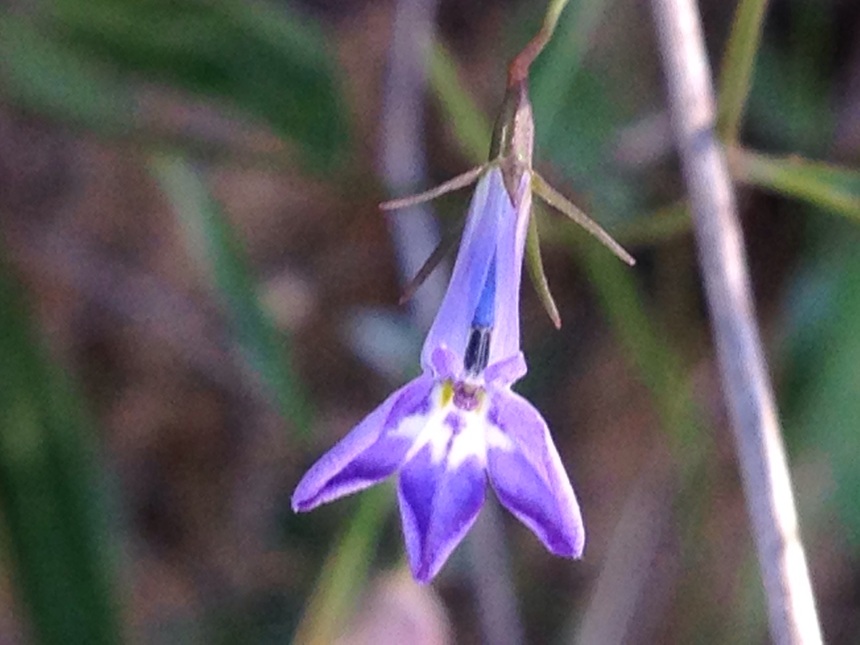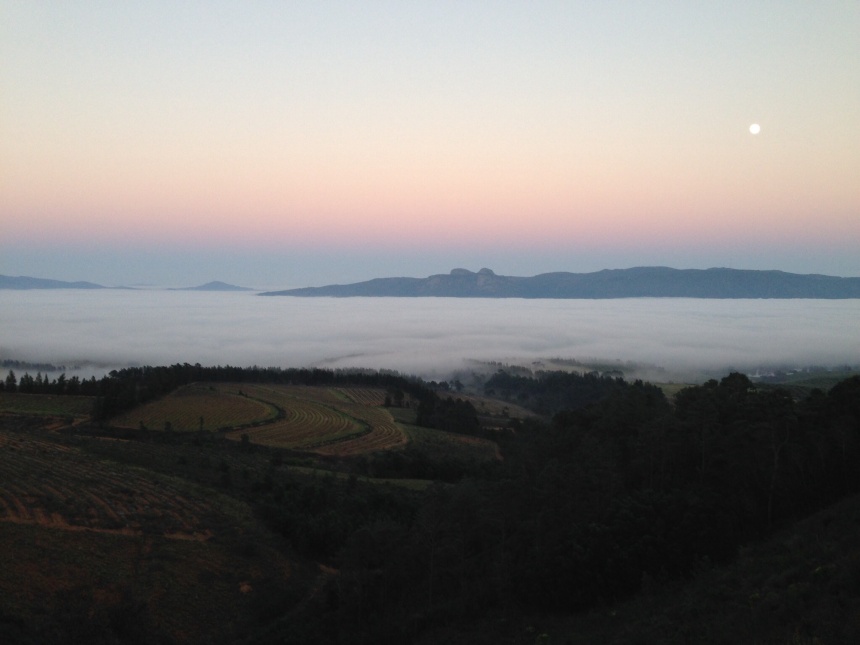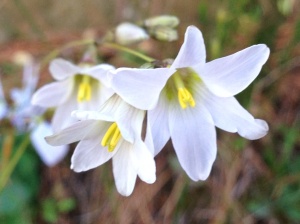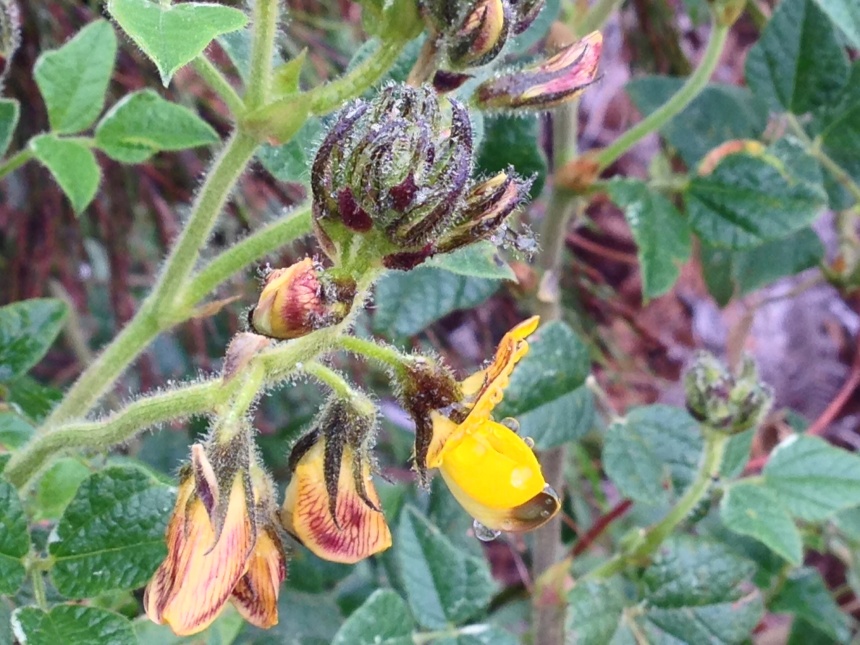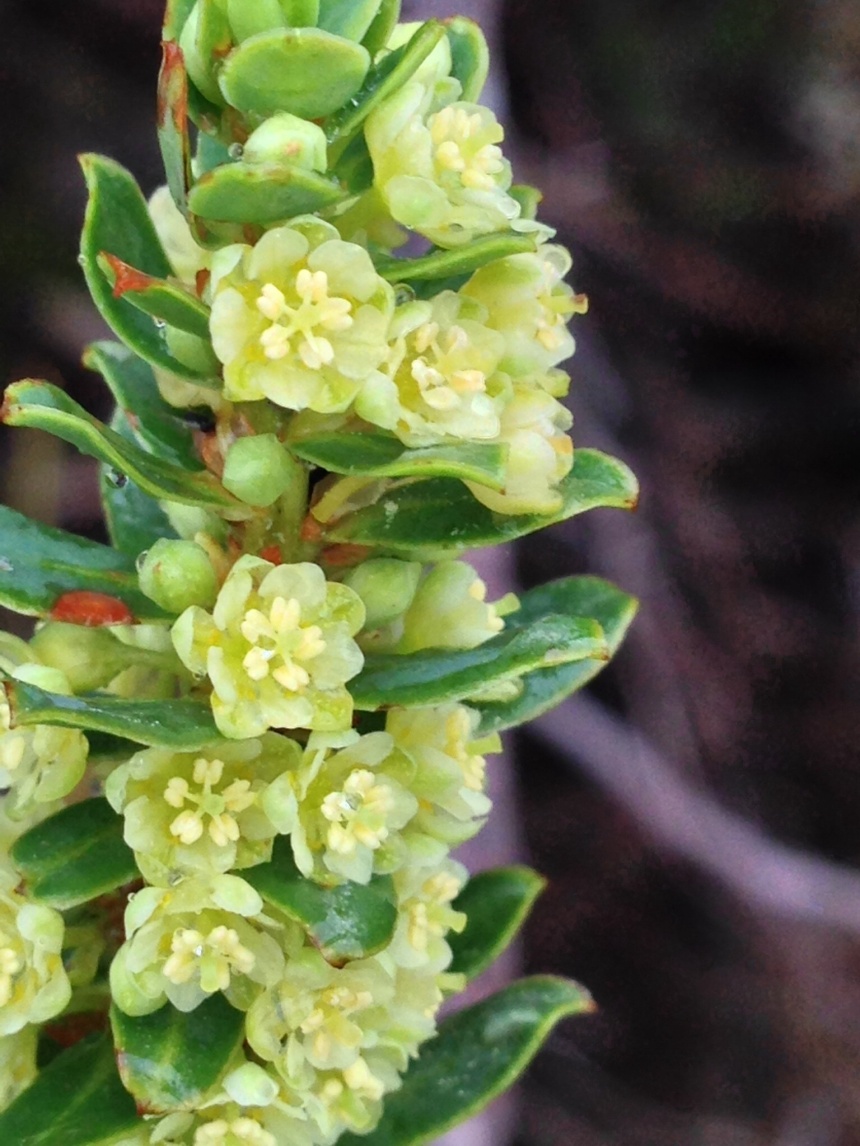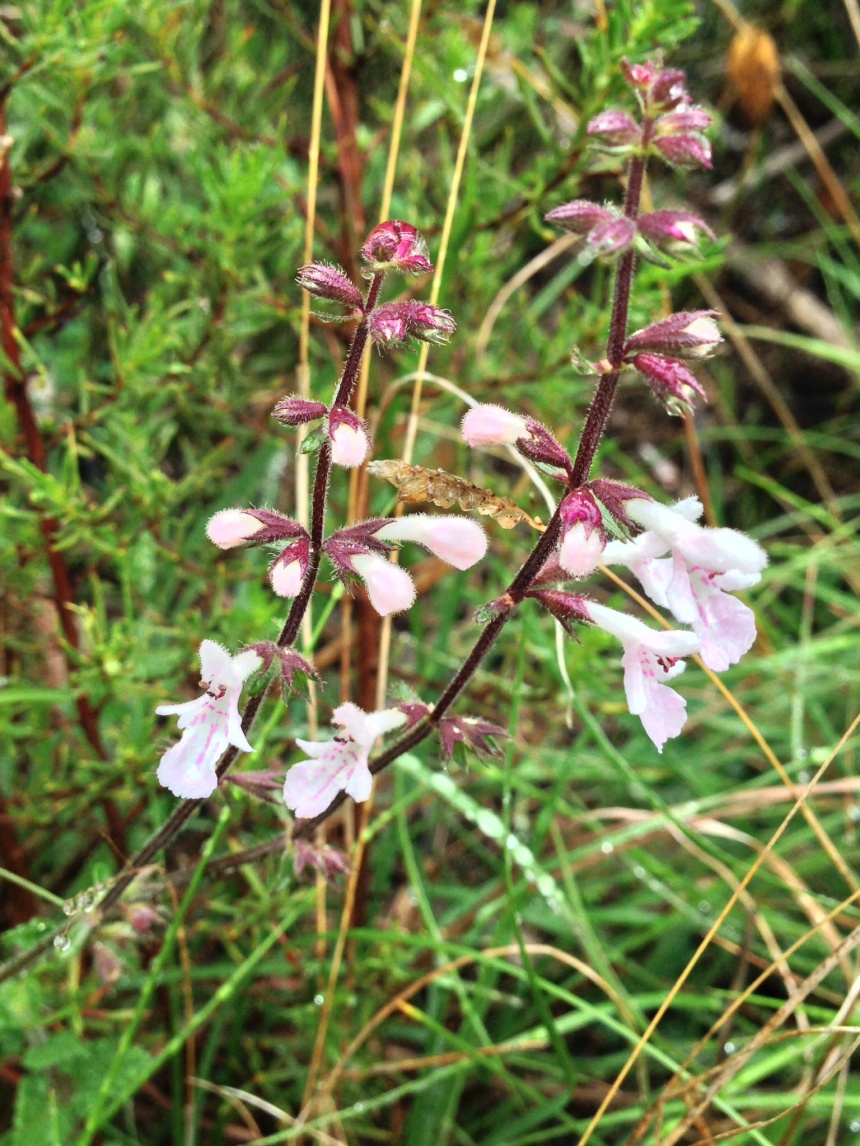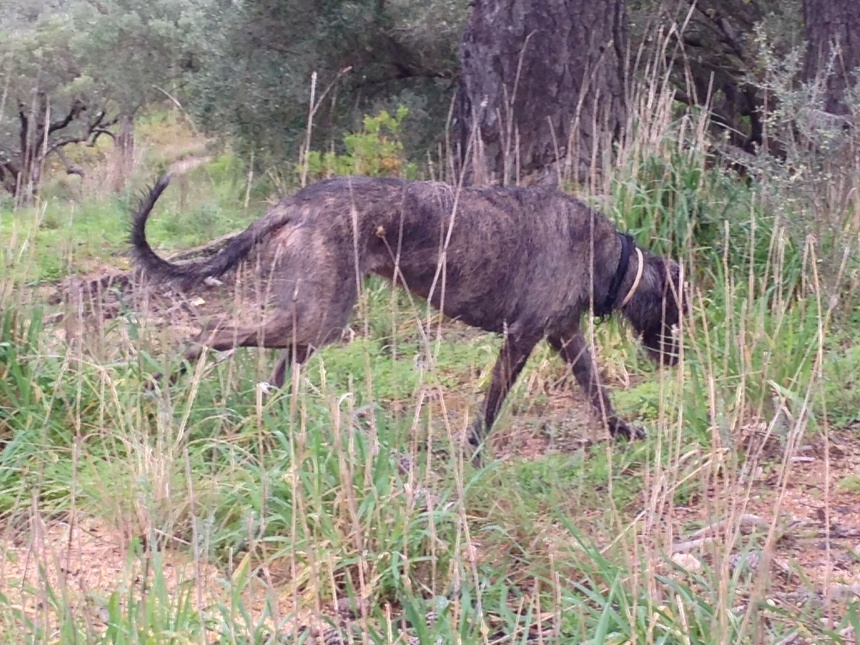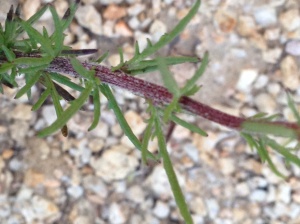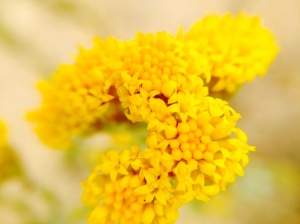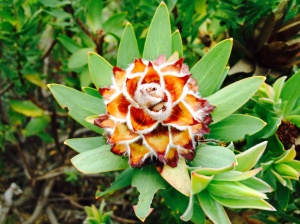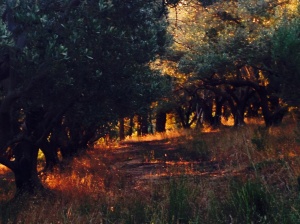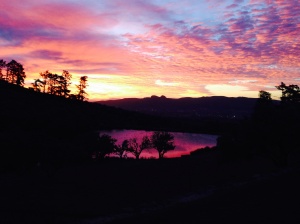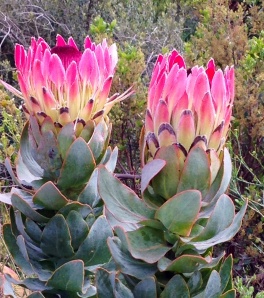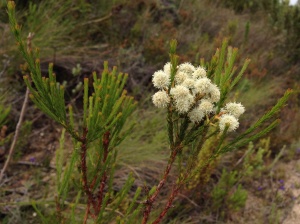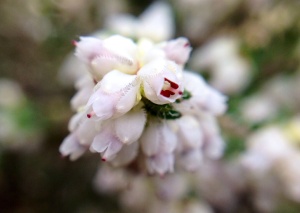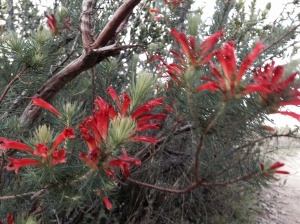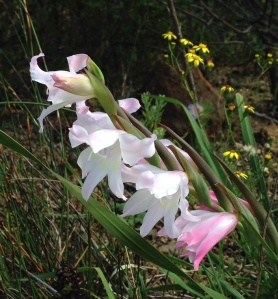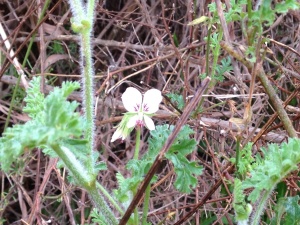An auspicious day
A lovely run last night at the end of an auspicious day. My nephew Beckett James Grey Mulhern was born in New York. Birthday the 21st of October; an autumn child, harvest festivals and pumkins, the trees in Ireland wonderful shades of red and gold as you drive down Wexford roads to the Opera Festival. The huge full moon. October has always been a happy month in our family.
I remembered to take a couple of whiffs of the inhaler before we left the house which meant the lungs were clear to convert oxygen as needed and we fairly bounded up the mountain in the fading evening light. As we climbed higher I could hear the baboons calling in the forest. Maebh and Jemima Chew heard them too and shot off to explore. Luckily they decided not to go too far and quickly came back to Seamus and to me as we climbed higher. I have a new weapon against wandering wolfhounds – you can see it in this photo of Leucadendron tinctum in which Meabh elegantly arranged herself in the background.
The white you can see on her collar is a tracker. I found it online, it’s German, works brilliantly in South Africa and tracks your dogs live when they go missing. When the wolfhounds wander we get incredibly worried; we know they can travel a long way and dogs have been lost on this mountain more than once. Shouldn’t happen with this cute little piece of technology which links to the iPhone.
The baboons used to come down into the olive groves and even as far as the gum trees behind the house. I haven’t seen them for quite a while, they really hate the wolfhounds.
One of my favourite flowers, Aristea capitata is in full flower at the moment. There is a colony on the driveway and the blue spikes are a joy to behold.
This was one of the special evenings. No wind, the end of a hot day with a dampness in the air that cooled us as we ran higher. Lovely light. When we stopped for a drink at the weir Maebh, who was in a modeling mood today, stood in front of the Ilex Mitis as I took a photo of the white trunks gleaming in the evening light. With her dappled coat she almost disappears.
Paarl holds an iconic place in the South Africa psyche and the two huge granite rocks that stand above the town to the west are unmistakable to anyone who knows the Cape. Maebh, once again, stood for a moment to watch as the sun slipped away behind the rocks, which happens just at this time of year. Soon it will be setting well to the west, over Table Mountain.
There are so many flowers in bloom that it’s hard to know where to begin. One is this tiny Pelargonium, I don’t know what it’s called but I do like the pink tinge to the end of the petals.
Another is a favourite, the spikes of Microdon dubium.
Talking of dubiums, some new bulbs have emerged. This is Ornitholagum dubium. It flowers in just one place on the farm and there it flowers copiously.
This one I’m less sure of – Bobartia I think, possibly Bobartia indica.
The farm is covered in this one, charmingly known as Lady’s Hand, because the petals, bent back in greeting, resemble the hand of a delicate girl waving a hello. Cyanella hyacinthoides.
There’s a plethora of peas on the go at the moment and this is Aspalanthus cordite, unmistakable with its grumpy spiky leaves.
I love this shrub – Passerina cormybosa. They are supposed to be pink and yellow, while we have some that some that seem to be white as well.
There is masses of Lobelia along the roads, this one I think is Lobelia coronopifolia.
Another flower that is to be found absolutely everywhere and is flourishing in the garden as well is Scabious africana. This one is particularly pretty.




















